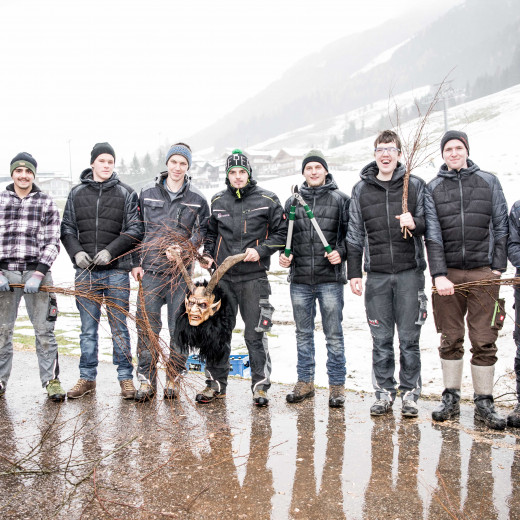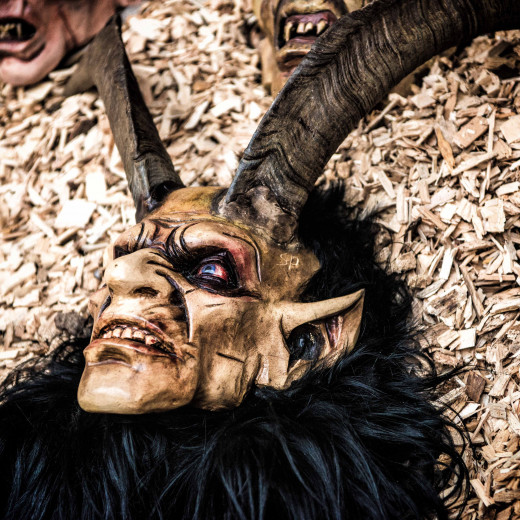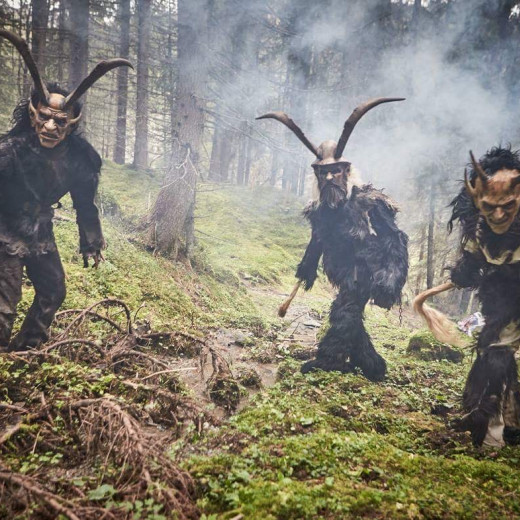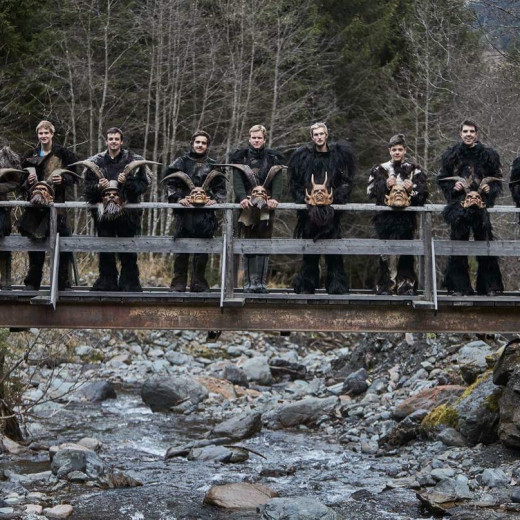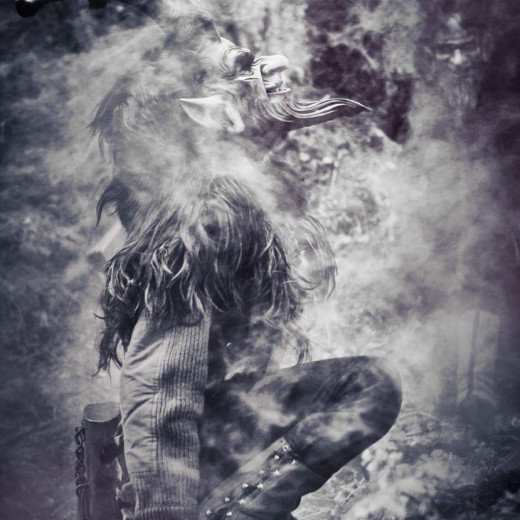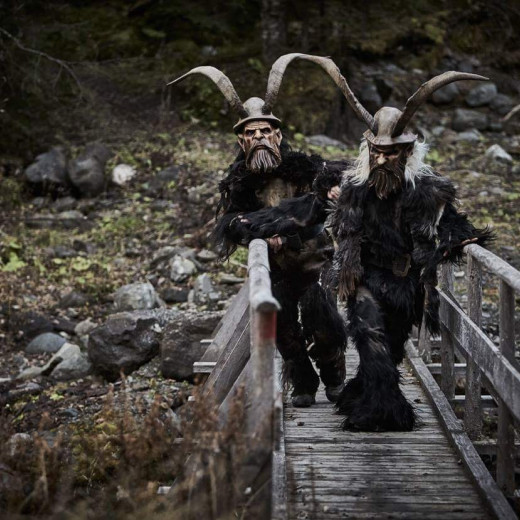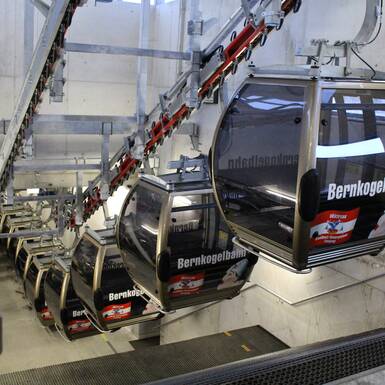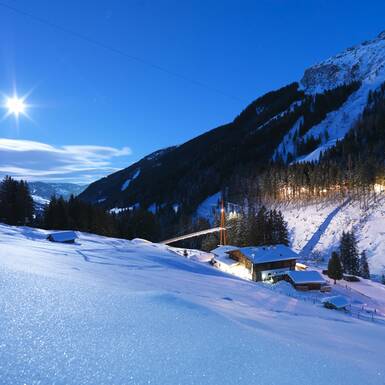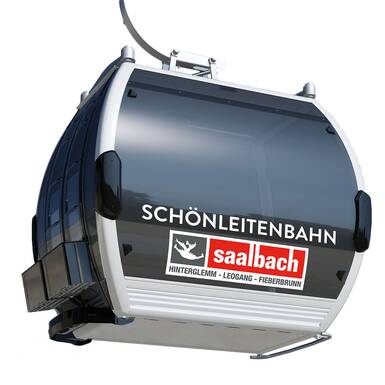- Traditions
Krampus
The “Kramperl” – that is what we call the Krampus* – is already causing noisy turmoil and giving people goose bumps during the otherwise calm advent period. It’s an old custom, practiced and passed on with a lot of passion and effort by the local fellows in Glemmtal.
* “Krampus“ is a beast-like creature from the folklore of Alpine countries thought to punish children during the Christmas season who had misbehaved, in contrast with Saint Nicholas, who rewards well-behaved ones with gifts.
The end of November marks the reverent time – the Advent season. It starts to get dark earlier, the first snowfall has already covered the Glemmtal with a thick white blanket and the roofs have been embellished with Christmas lights, giving them a festive glow. Everything seems picturesque and dreamy around this time of the year, and the scent of Christmas biscuits and fruit cakes oozes from the kitchens. But the ringing of heavy cow bells and the rattling of chains disrupts the pre-Christmas peace – the Kramperls are coming!
The Stoakoglerpass from Glemmtal
Even the bravest can’t keep their hearts from beating a little faster when the devilish creatures start making creepy noises and mystically arise from the dark. The Krampuslaufen (Krampus Run) is a passion for many Pinzgau locals and a lot of care is put into the costumes and event. Several years ago, 13 boys and young men aged between 14 and 26 came together to form the “Stoakoglerpass” in Saalbach Hinterglemm. A “Pass” is a group of Krampus performers and the head of the “Stoakoglers” is Mario Berti.
Keeping the tradition alive
“You have to be the Krampus 365 days a year – sometimes more intensively, sometimes less. But the passion for this tradition is with us throughout the year. You order new masks, search for new outfit components or do a terrifying photo shoot. The Hinterglemm photographer Daniel Roos perfectly captured us and what we do in the Schwarzachergraben,” says Mario, as I met him and his Krampus colleagues. Right now, they are preparing for the first runs of the season and are very busy tying thin birch branches into rods. I want to know what they love so much about the Krampus Run and without hesitation, Gerhard Kressl, who is also an active member of the Glemmer Schützen, answers, “The tradition! We just want to keep this custom alive for future generations. And besides that, it’s a whole lot of fun. We’re all friends and share our passion for the Krampus.”
The Kramperl peak season begins with big show runs for which the group has to drive through all of the Pinzgau region and beyond. “The moment when you get dressed, put on the mask and take the birch rod into your hand, still gives us a boost of adrenaline each time. The audience is enthralled and watches our entrance and as soon as we put on the masks we all becomes Krampuses. We step in majestically and proudly present our masks. Of course, it is also part of the custom to let the visitors get in touch with the birch rod in order to get rid of evil spirits,” explains Mario Berti with an enthusiastic glow in his eyes.
Artfully carved masks
The Krampus’ equipment is dictated by custom: A fur suit – usually made from goat fur, as clearly demonstrated by the strong odour. Large, loud bells worn around the belly and held by a belt. A rod made of thin birch branches or a cow’s tail. And of course, an artfully carved mask. “We all get our masks made by the Pinzgau mask carver Arthur Moinat. They are either made from light Swiss or Weymouth pine and are intended to look as human and as scary as possible. For the horns, we usually use those of goats – that’s what tradition says,” they explain. I am surprised by how light the carved mask is and the group laughs, “The whole outfit weights around 25 kilogrammes – so a lighter wooden mask is simply easier to wear when it comes to longer shows. Our field of vision is quite limited anyway. We peek through a little slit in the masks – it’s like walking with tunnel vision.”
But even after St. Nicholas Day, the season is not yet over for the Stoakoglerpass – and this might allow one or another winter holidaymaker to still make their terrifying acquaintence. The “Perchten” move, together with the “Wurzelmandl” from hotel to hotel on 7 January. After Christmas, the loudly ringing bells help drive out evil winter spirits, and being visited by the Perchten is said to bring a lot of luck.

